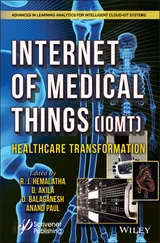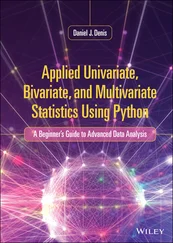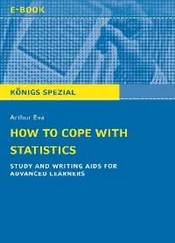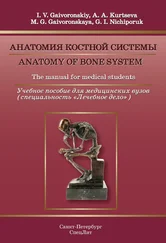Comparing Outcomes for Binary Data
Many studies involve a comparison of two groups. We may wish to combine simple summary measures to give a summary measure that in some way shows how the groups differ. Given two proportions one can either subtract one from the other, or divide one by the other.
Suppose the results of a clinical trial, with a binary categorical outcome (positive or negative), to compare two treatments (a new test treatment versus a control) are summarised in a two by two contingency table as in Table 3.3. The results of this trial can be summarised in a number of way sas in Table 3.3below.
Table 3.3 Example of two by two contingency table with a binary outcome and two groups of subjects.
|
Treatment group |
| Outcome |
Test |
Control |
| Positive |
a |
b |
| Negative |
c |
d |
| Total |
a + c |
b + d |
Summarising Comparative Binary Data – Differences in Proportions
From Table 3.3, the proportion of subjects with a positive outcome under the test treatment is  and under the control treatment is
and under the control treatment is  .
.
The difference in proportions is given by

In prospective studies the proportion is also known as the risk and the difference in proportions as the risk difference (RD)

When one ignores the sign, the above quantity is also known as the absolute risk difference (ARD), that is.

where the symbols || mean to take the absolute value.
If we anticipate that the treatment to reduce some bad outcome (such as deaths) then it may be known as the absolute risk reduction (ARR). If we anticipate that the exposure/treatment will increase some bad outcome (such as deaths) then it may be known as the absolute risk excess (ARE).
Example – Summarising Results from a Clinical Trial – Corn Plasters RCT: Differences in Proportions
Table 3.4shows the results of a randomised controlled trial conducted by Farndon et al. (2013) to investigate the effectiveness of salicylic acid plasters compared with usual scalpel debridement for treatment of foot corns. There are two study groups, the control group (randomised to receive usual care of scalpel treatment) and the experimental or intervention group (randomised to receive corn plasters). The main outcome measure was whether or not the index corn had improved or resolved (healed) at a three‐month post‐randomisation as assessed by an independent podiatrist ‘blind’ to the treatment group.
Table 3.4 Corn healing rates at three‐months post‐randomisation in patients with corns by randomised treatment group
( Source: data from Farndon et al. 2013).
| Index corn resolved/healed at a three‐month post‐randomisation |
Corn plaster (intervention) group |
Scalpel (control) group |
|
n |
(%) |
n |
(%) |
| Yes |
32 ( a ) |
(34%) |
20 ( b ) |
(21%) |
| No |
63 ( c ) |
(66%) |
74 ( d ) |
(79%) |
| Total |
95 ( a + c ) |
(100%) |
94 (b + d ) |
(100%) |
The ‘risk’ or proportion of patients whose corn was healed or resolved by a three‐month post‐randomisation is 32/95 = 0.337 or 34% in the plaster group and 20/94 = 0.213 or 21% in the scalpel group. The difference in proportions or RD is 0.337–0.213 = 0.124 or 12%. If we started with 100 patients in each arm we would expect 12 more patients' corns to have healed in the plaster arm compared to the scalpel arm by the three‐month follow‐up.
Summarising Comparative Binary Data – Relative Risk
The risk ratio, or relative risk (RR), is

Example – Summarising Results from a Clinical Trial – Corn Plasters RCT: Relative Risk
The relative risk for a corn healing, at three months, in the plaster group compared to the scalpel group is 0.337/0.213 = 1.582 or RR = 1.58. This is the risk of the corn healing (a good thing) with the intervention compared to the control group. Thus, patients treated with corn plasters are 1.58 times more likely to see their corn resolve compared to patients with scalpel treatment.
Summarising Comparative Binary Data – Number Need to Treat
A further summary measure, sometimes used in clinical trials is the number needed to treat . This is defined as the inverse of the ARD.

This is the additional number of people you would need to give a new treatment to in order to cure one extra person compared to the old treatment. Alternatively, for a harmful exposure, the number needed to treat becomes the number needed to harm and it is the additional number of individuals who need to be exposed to the risk in order to have one extra person develop the disease, compared to the unexposed group. The NNT is a number between 1 and ∞; a lower number indicates a more effective treatment. When there is no difference in outcome between the test and control groups, that is, ARD = 0, then the NNT is 1/0 which is infinity ∞.
Example – Summarising Results from a Clinical Trial – Corn Plasters RCT: NNT
The ‘risk’ or proportion of patients whose corn was healed or resolved by a three‐month post‐randomisation is 32/95 = 0.337 or 34% with the corn plaster and 20/94 = 0.213 or 21% in the scalpel control group. The difference in proportions or RD is 0.337–0.213 = 0.124 or 12%.

The NNT is 8.065 or 9 (rounded up to the nearest person). Thus, on average one would have to treat nine patients with corn plasters in order to expect one extra patient (compared to scalpel treatment) to have their corn resolved at a three‐month follow‐up.
Each of the above measures summarises the study outcomes, and the one chosen may depend on how the test treatment behaves relative to the control. Commonly one may chose an absolute RD for a clinical trial and a relative risk for a prospective study. In general the relative risk is independent of how common the risk factor is. Smoking increases ones risk of lung cancer by a factor of 10, and this is true in countries with a high smoking prevalence and countries with a low smoking prevalence. However, in a clinical trial, we may be interested in what reduction in the proportion of people with poor outcome a new treatment will make.
Читать дальше
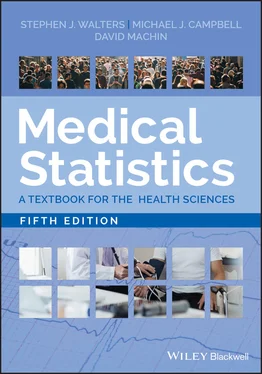
 and under the control treatment is
and under the control treatment is  .
.







